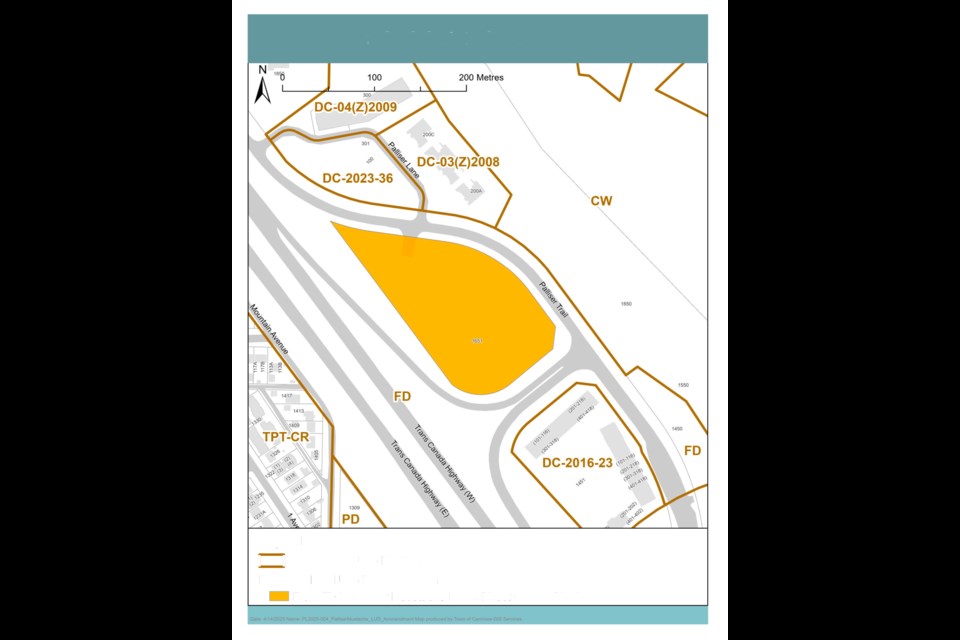CANMORE – The next step in providing between 250 and 350 affordable housing units in the Palliser area now goes to a public hearing.
Canmore council gave first reading to create a new direct control district on the Moustache Lands at its May 6 meeting and set the public hearing for June 3.
The land was provided by the provincial government in the month leading up to the 2023 provincial election, and as part of the land transfer agreement, the focus is on building affordable housing with construction to begin by spring 2026. The plan, if approved by council, could lead to development of six buildings up to six storeys in height at 1651 Palliser Trail.
“I look forward for this going to a public hearing and I’m very happy this process is moving forward because I know it’s time constrained,” Mayor Sean Krausert said. “We very much want to achieve development of this lot in accordance with the principles of which it was to provided to us.”
If passed, the new direct control district will also allow for a mixed-use development, public spaces, a playground, a public plaza and connection to cycling paths. It would also remove the minimum parking requirements and create a landscape buffer between the buildings and the Trans-Canada Highway.
A staff report from Liz Pollock, a development planner with the Town, and Harry Shnider, the Town’s manager of planning and development, stated the land has a “unique shape and a number of constraints.”
The direct control district, however, would allow for the creation of needed affordable housing in the community. The site also calls for 2,000-4,000 metres of other space, including commercial.
“The proposed land use amendment reflects the policy intent of the ASP, which envisions a vibrant, inclusive community node with public plazas, open space, and a pedestrian-oriented environment,” stated Pollock’s and Shnider’s report. “It also allows for no minimum automobile parking requirements to support affordability and sustainable transportation goals.”
An April 15 virtual public information session was held and landowners within 100 metres were given information in anticipation of possible comments for the public hearing.
During the 50-minute session, it was noted the original site design was for six six-storey buildings. After doing additional work, the buildings on site were reduced to four six-storey buildings to provide more flexibility in design for the site.
During a January committee of the whole meeting, an update outlined ongoing work on the project to provide additional services for the community.
Some of the organizations involved are YWCA Banff, the Town, Canmore Community (CCH) Housing, Bow Valley Regional Housing, Rocky Mountain Adaptive and Îyârhe Nakoda First Nation.
Part of the potential use could be for transitional housing that could serve the region from Lake Louise to Mînî Thnî. YWCA Banff has previously said more than 40 per cent of its clients come from Canmore.
YWCA Banff's Higher Ground plan has been in place since 2017, which aims to create a community hub, offer continuity of care, provide inclusive support and adapt to the community’s needs.
In 2024, YWCA Banff helped more than 4,200 people. In 2023, YWCA Banff helped more than 2,300 community members and had more than 1,400 safe nights for people using the emergency shelters. They also received more than 670 crisis calls.
The area – known as Site 7 – is part of the Palliser Trail area structure plan that was passed by council in 2023.
The plan is expected to have up to 1,300 residential units, with more than 1,000 of them being affordable.
CCH is working on the initial steps for a four- and six-storey purpose-built rental that will add 144 units in the area where the dog park is located.



